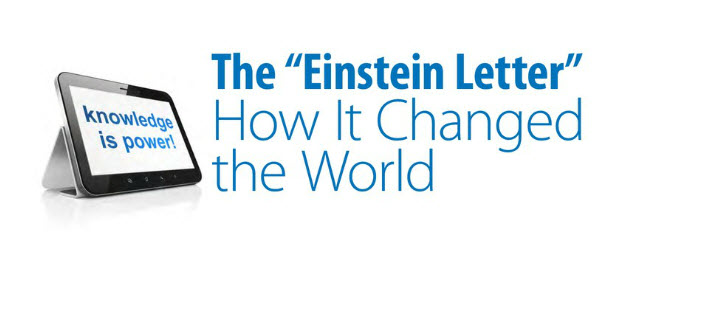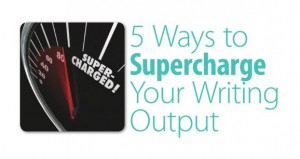Albert Einstein was a life-long pacifist.
Yet August 2, 1939, carries a sardonic reminder of how this gentle man of peace not only helped to win a war, but also contributed to development of the ultimate weapon of destruction. Our story begins with the 1938 discovery of nuclear fission by two German scientists …
Their finding — splitting uranium atoms generates energy — gave Nazi Germany a head start on developing nuclear energy. American scientists feared the Nazis would use this breakthrough to create a weapon of unprecedented power.
Germany already had two materials critical to its development — heavy water and uranium. Abundant supplies of both materials were found in Norway and Czechoslovakia — both under Nazi control.
Physicist Leo Szilard was greatly disturbed at the U.S. government’s lack of action in the face of this threat. Compounding his anxiety was the fact that Germany stopped the sale of uranium from Czech mines. Szilard believed this meant one thing: Germany was close to developing an atomic bomb.
Unable to get the U.S. government’s support, he and another physicist went to his old friend, Albert Einstein. They urged Einstein to write a letter to President Franklin D. Roosevelt, outlining the threat and suggesting the President compel American physicists to develop a similar atomic capacity.
Einstein, a devoted pacifist, faced an enormous dilemma. Does he write a letter to Roosevelt, urging him to conduct research of the nuclear chain reaction that would lead to development of a powerful atom bomb, or does he decline and permit the Germans to develop this bomb — which, in either case, could potentially kill millions of people?
Because he could not allow the Nazis sole possession of such destructive power, he decided to write the letter to the President.
Einstein dictated what is now known as the “Einstein Letter.”
Historians consider this letter among the most famous documents in the history of atomic weaponry. Barely two typewritten, double-spaced pages in length, its language is simple to understand.
With Einstein’s name and reputation bearing considerable weight, his letter makes authoritative but tentative assertions since scientists had not yet proved their hypotheses. Yet, it was persuasive enough to become the catalyst for developing newly-discovered atomic energy.
Citing the work of an international group of scientists, Einstein pointed to a new generator of power (uranium), urged vigilance and quick action, sounded a warning, made a prediction about uranium’s destructive capability, and mapped out a plan (“permanent contact between the Administration and the group of physicists working on chain reactions in America”).
Roosevelt formed an “Advisory Uranium Committee” in response. Yet, a large-scale effort to build an atomic bomb did not occur until the day before the bombing of Pearl Harbor. It became known as the “Manhattan Project,” and led to the world’s first atomic bombs.
Ironically, despite their discovery of nuclear fission, the Germans never developed an atomic weapon of their own.
Einstein later said if he’d known Germany was not going to create its own atomic bomb, “I never would have lifted a finger.”






